How Many Types of Penguins are There?
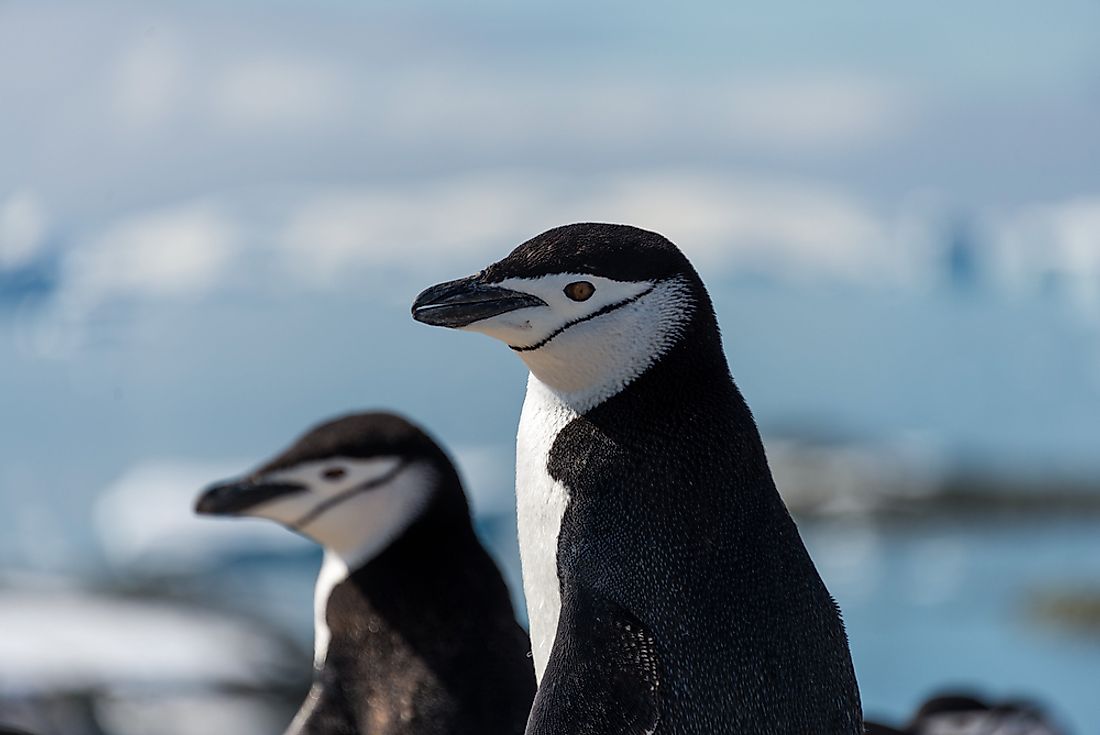
Penguins are flightless, aquatic birds that belong to the order Sphenisciformes and the family Spheniscidae. These birds live almost exclusively south of the Equator with the exception of the Galapagos penguin which lives in the Galapagos Islands of Ecuador. Penguins usually feed on crustaceans, cephalopods, and fishes found in the sea. These birds spend nearly half of their lives in water and half on land. Here we present the species of penguins living in the world today.
19. Macaroni Penguin
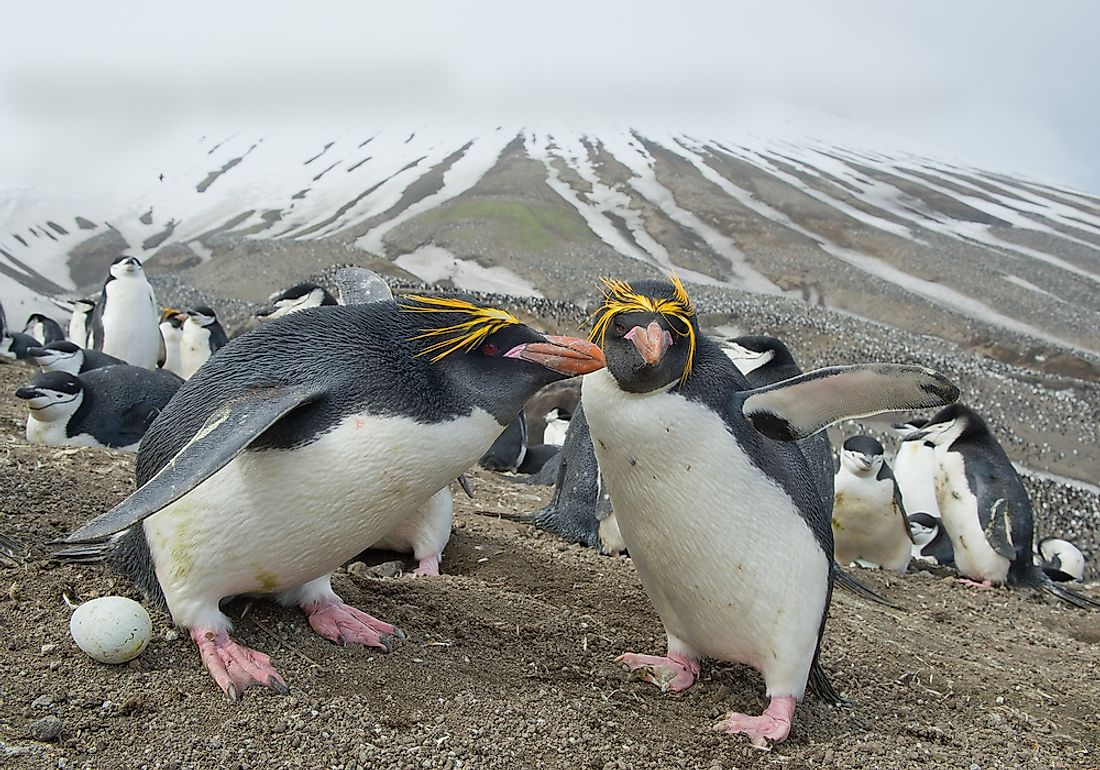
The macaroni penguin, Eudyptes chrysolophus, is a penguin species whose range stretches from the Antarctic Peninsula to the Subantarctic. One of the 6 species of crested penguins, the macaroni penguin features a yellow crest, black face and upper parts, and white underparts. The penguins feed on crustaceans, mainly krill, cephalopods, and small fish. The macaroni penguin has one of the largest populations of the penguin species. However, the species is still classified as vulnerable due to the steadily declining population.
18. Royal Penguin
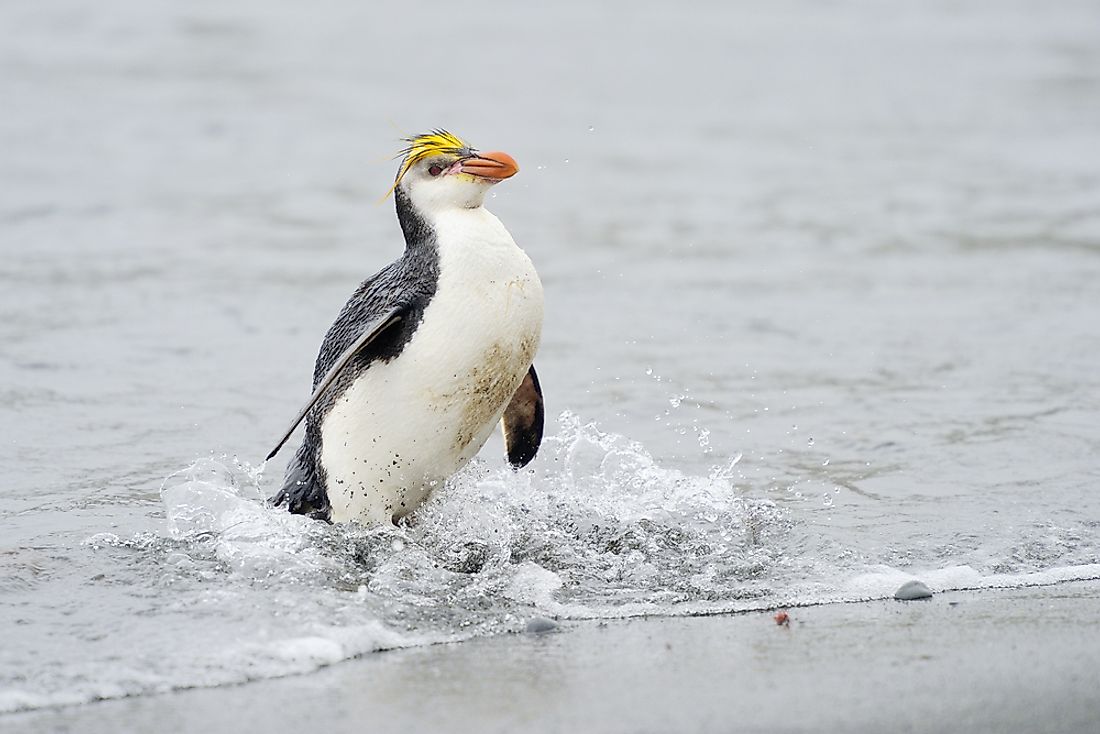
The royal penguin, Eudyptes schlegeli, is a penguin species that lives on the sub-Antarctic Macquarie Island and other islands in proximity. One of the species of crested penguins, the royal penguins are quite similar in appearance to the above-mentioned macaroni penguins and thus there is controversy regarding their classification as a separate species. One of the physical differences between the two types is that the royal penguin features a white face and chin instead of black in the case of the macaroni penguin. However, the two species are known to interbreed. The royal penguins can be sighted in the waters around Antarctica and spend a greater part of their time at sea than on land.
17. Northern Rockhopper Penguin
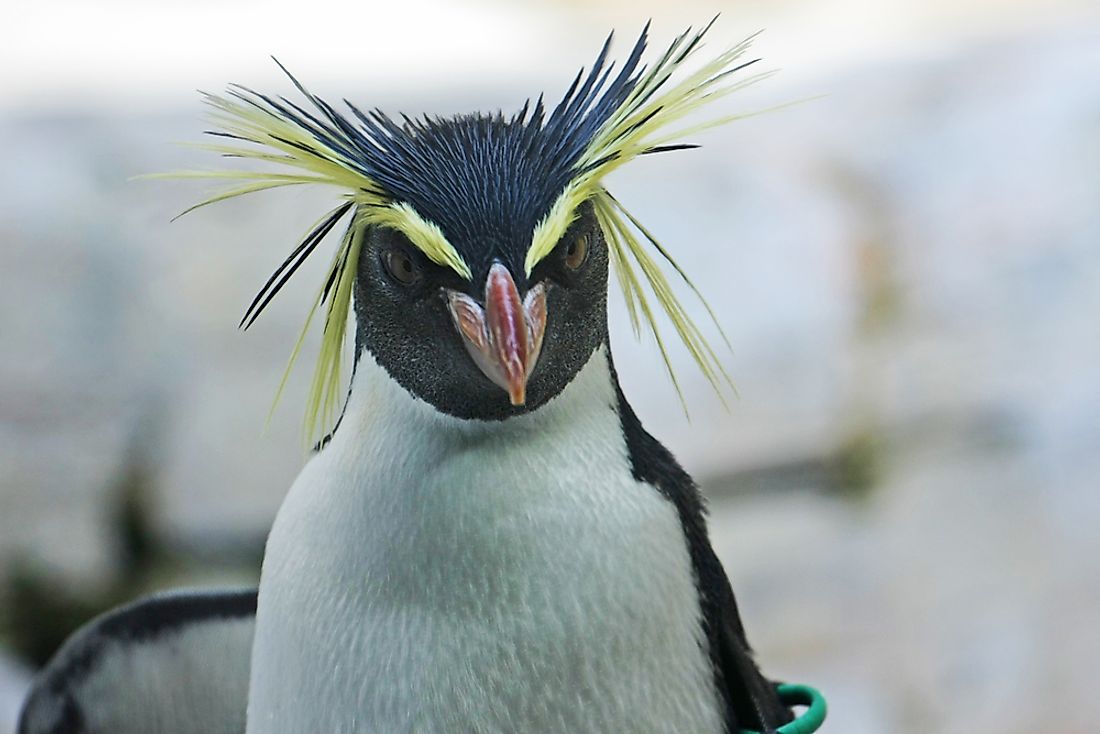
Also known as the Moseley's penguin, 99% of the population of the northern rockhopper penguin (Eudyptes moseleyi) breeds exclusively on the Gough Island and the Tristan da Cunha in the south Atlantic Ocean. These penguins feed mainly on krill and other crustaceans, octopus, squid, and fish. Since the 1950s, the population of this penguin has undergone a 90% decline. It is therefore classified as an endangered species.
16. Eastern Rockhopper Penguin
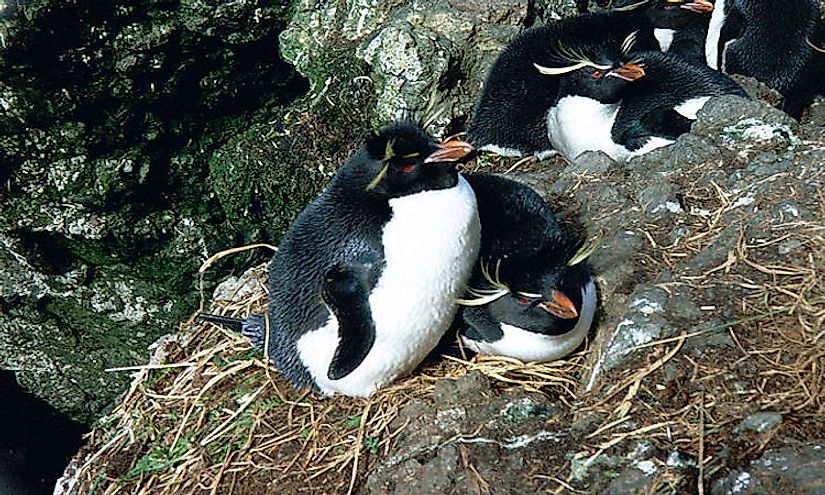
The eastern rockhopper penguin (Eudyptes chrysocome filholi) inhabits sub-Antarctic islands located in the Indo-Pacific ocean like the Campbell, Auckland, Antipodes, Heard, Crozet, Prince Edward, Kerguelen, and other islands.
15. Erect-crested Penguin
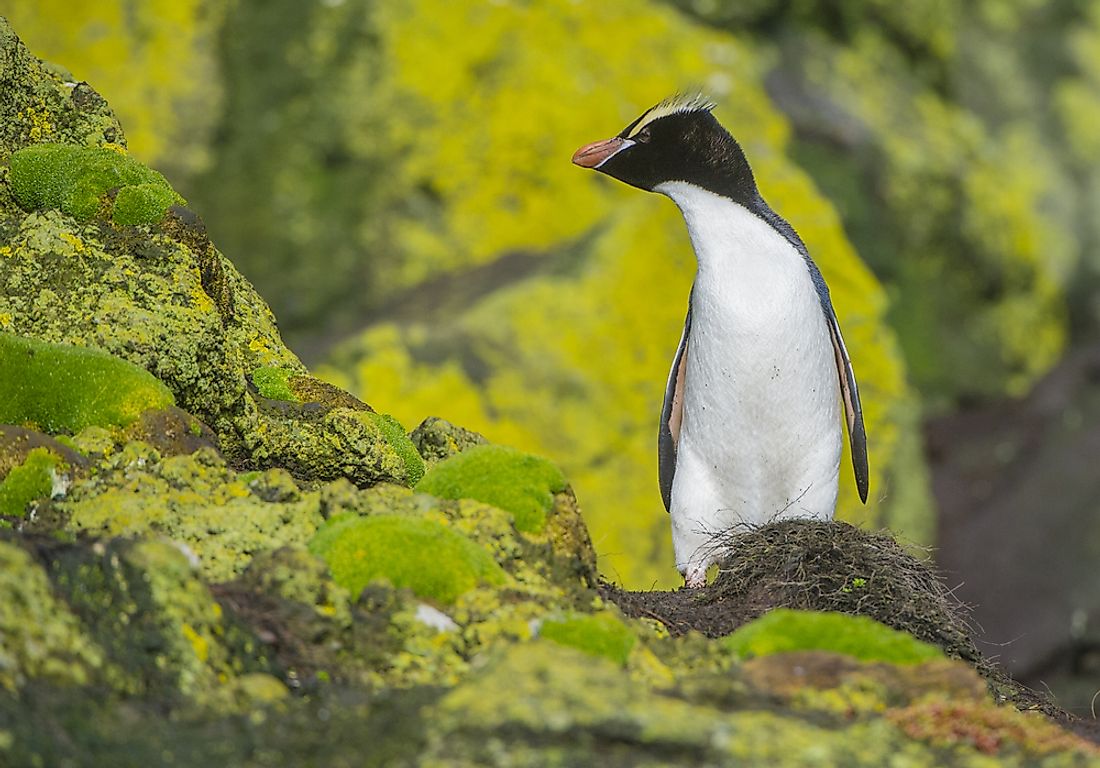
The erect-crested penguin (Eudyptes sclateri) is a penguin species that is known to live only in New Zealand. Here, it breeds on the Antipodes and Bounty Islands. It is primarily due to this restricted range that this species is classified as endangered.
14. Snares Penguin
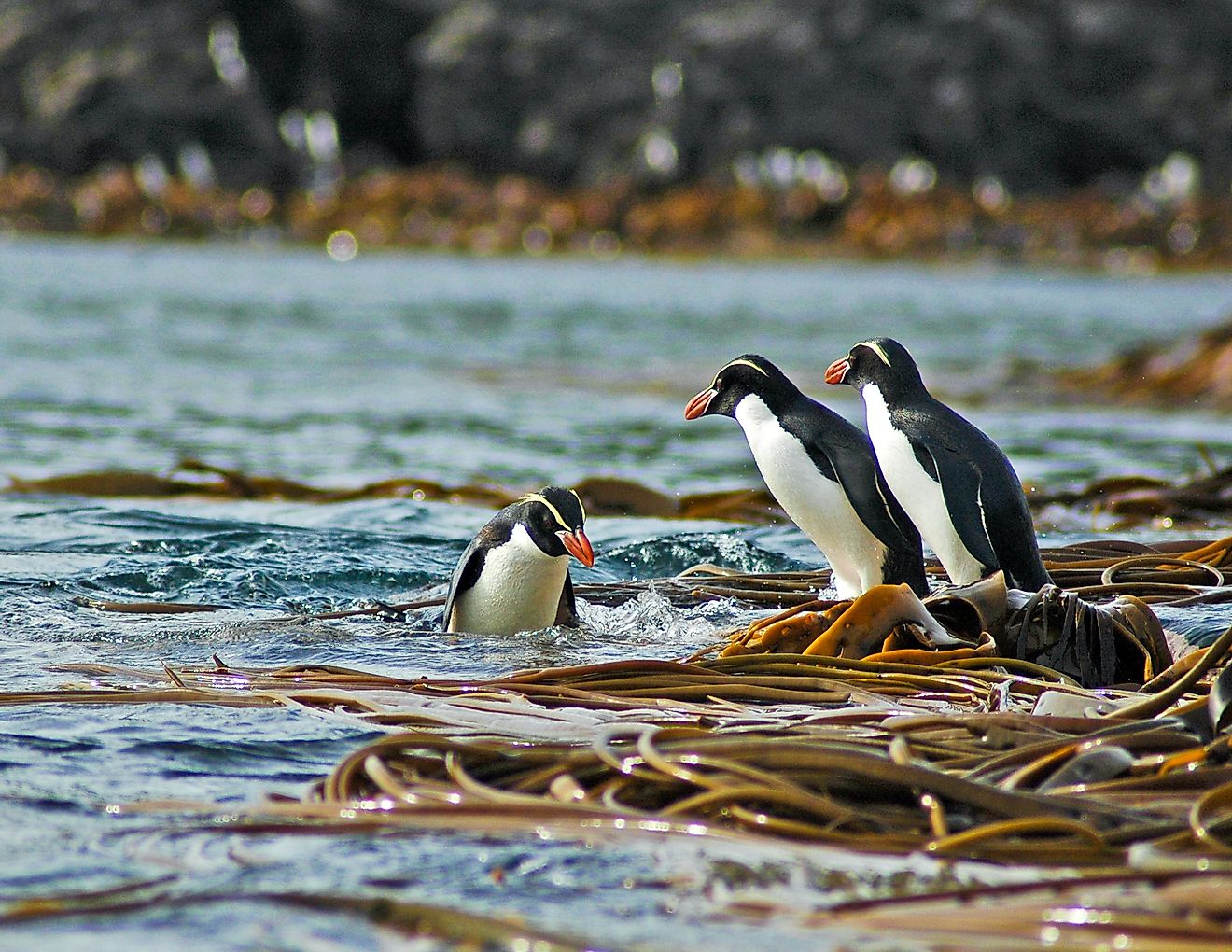
The Snares penguin (Eudyptes robustus) breeds on a group of islands called The Snares off the southern coast of New Zealand’s South Island. The penguin is medium-sized, at 50 to 70 cm. The penguin has a dark blue-black dorsal surface and white ventral surface. Krill, small fishes, and cephalopods act as food for these birds. The Snares penguin is classified as vulnerable by the IUCN.
13. Fiordland penguin
The Fiordland crested penguin (Eudyptes pachyrhynchus) breeds on the Stewart Island/Rakiura and South Island’s south-western coasts in New Zealand. Here, the penguins nest in colonies within dense temperate forests. The penguins feed mainly on cephalopods and, to some extent, on crustaceans and fish. Due to its small population, the Fiordland penguin is a threatened species with populations ranging between 2,500 to 3,000 pairs.
12. Yellow-Eyed Penguin
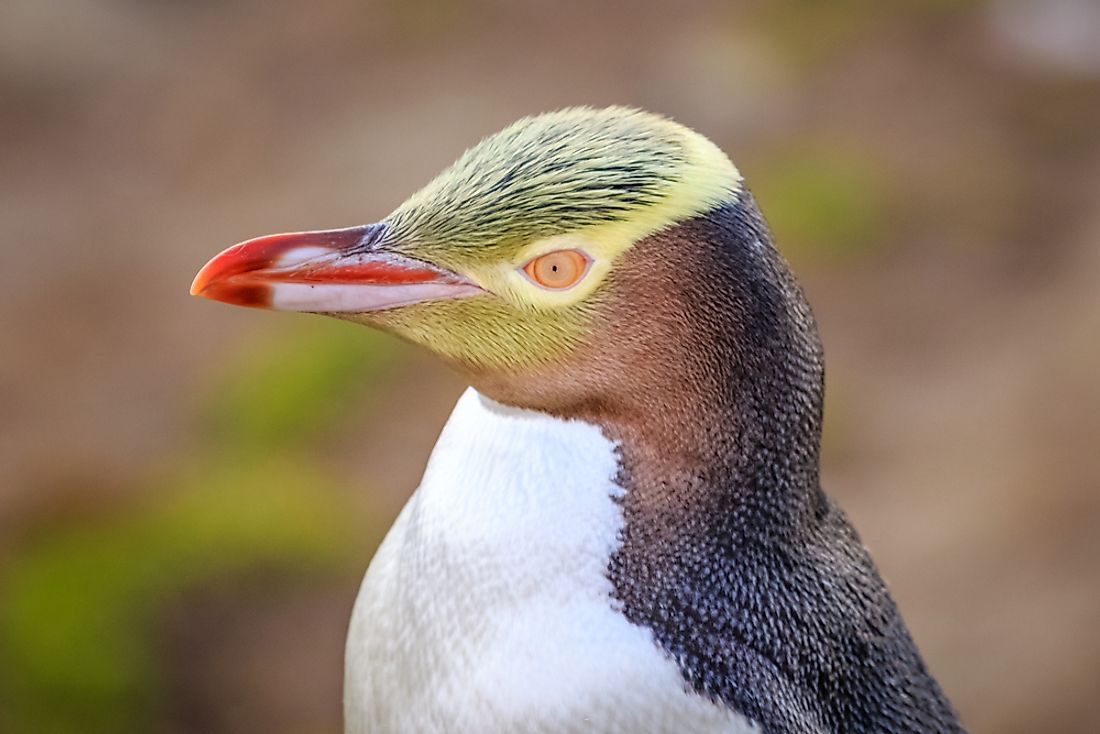
The yellow-eyed penguin (Megadyptes antipodes) is a penguin species that is closely related to the little penguin. These penguins breed along the coasts of New Zealand's South Island, as well as other nearby islands. The penguins are medium-sized, measuring about 62 to 79 cm in length. The penguins have a bright yellow band running from the eyes around the back of the head. Individuals live as long as 20 years. The yellow-eyed penguin has a population of only about 4,000 individuals and is thus an endangered species. Introduced predators and destruction of habitat are the biggest threats to these penguins.
11. African Penguin
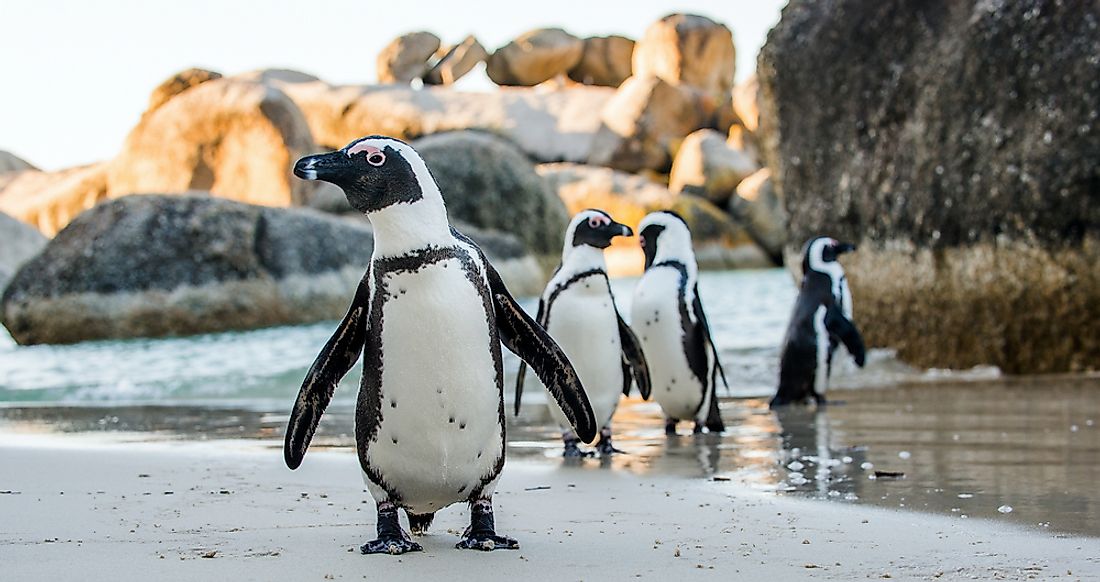
The African penguin (Spheniscus demersus) has a range confined to the African waters. The penguins possess a black facial mask and distinctive pink patches of skin above the eyes. The penguins live in colonies spread across 24 islands between Algoa Bay and Namibia, where they forage for pelagic fish and marine invertebrates in the coastal waters. The African penguin is one of the most threatened species of penguins living today and has been classified as Endangered by the IUCN. Only 10% of the population of the 1.5 million population estimated in 1910 survive today. Historical exploitation of the penguins for meat, removal of guano (which served as burrowing grounds for the penguins) for fertilizer preparation, oil spills, and competition by fisheries are some of the biggest threats facing the penguin population.
10. Galapagos Penguin
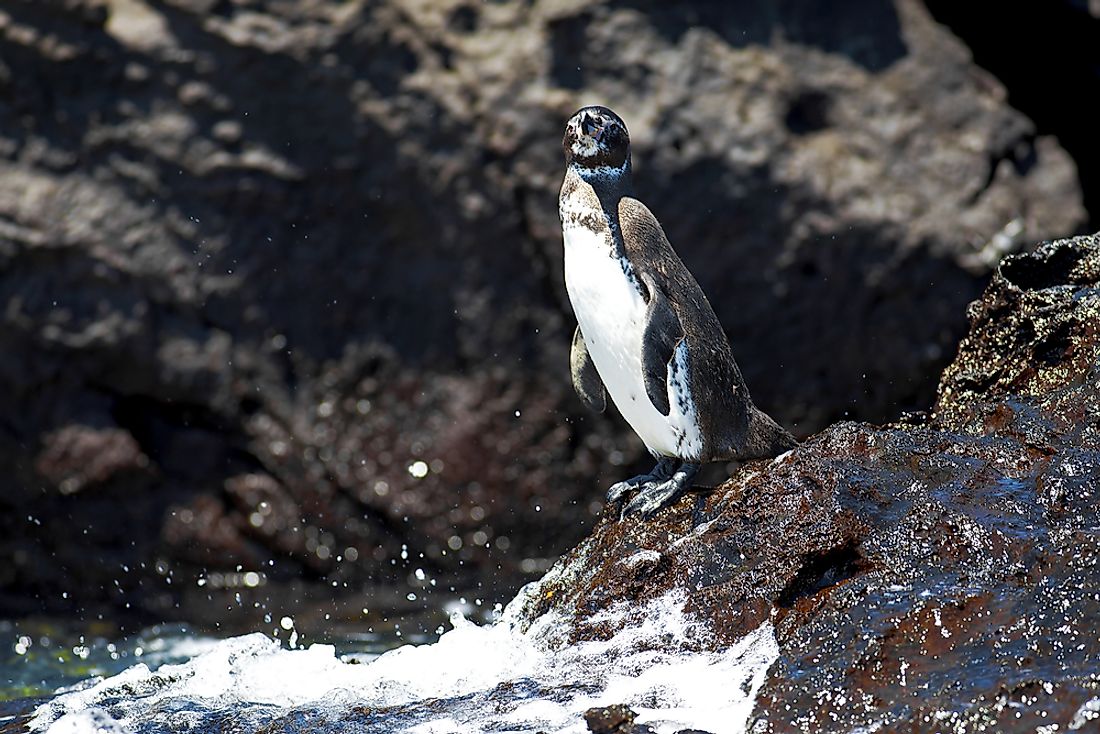
The Galápagos penguin (Spheniscus mendiculus) is endemic to the Galapagos Islands and is the only penguin living north of the Equator. The penguin is 49 cm long and about 2.5 kg in weight. These penguins are found primarily on the Fernandina Island and Iasabela Island of the Galapagos but small populations are also scattered throughout other islands. The penguins feed on small schooling fish and occasionally crustaceans. The Galapagos penguin is classified as endangered after it experienced a 70% reduction in population in the 1980’s.
9. Humboldt Penguin
The Humboldt penguin (Spheniscus humboldti) is a species of penguin living in South America. Coastal Chile and Peru serve as the breeding grounds of these penguins. The Humboldt penguin is named after the cold water current of the same name through which it swims. The species is classified as Vulnerable by IUCN. The penguins range in size from 56 to 70 cm. They feature a black head where a white border that runs from the top of both the eyes, around the ear covers and chin, to join at the throat. Climate change, over-fishing, and ocean acidification are the biggest threats to the survival of this penguin species.
8. Magellanic Penguin
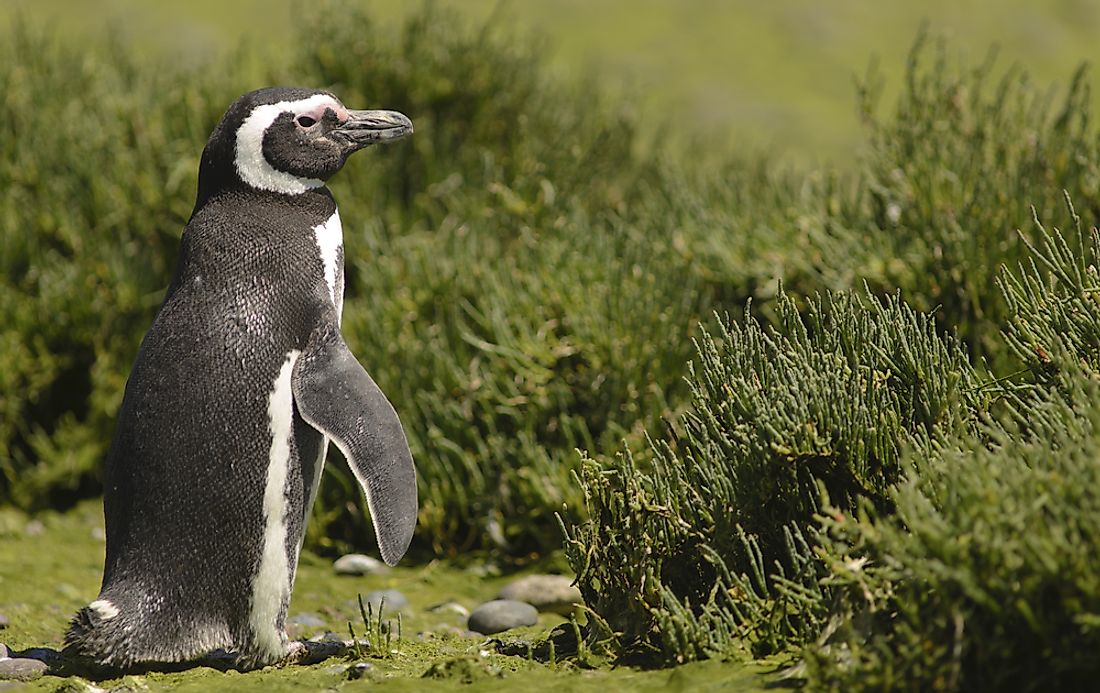
The Magellanic penguin (Spheniscus magellanicus) breeds in the coastal areas of Chile, Argentina, and the Falkland Islands. Some of these penguins even migrate to Brazil and are occasionally sighted in the coastal waters of Rio de Janeiro. The penguins grow to attain lengths of 61–76 cm. The penguins are characterized by two black bands between their breast. The Magellanic penguins feed on squid, krill, cuttlefish, and other crustaceans in the water. The species is classified as near threatened by IUCN. Climate change triggered increased frequency of extreme events like wildfires, storms, temperature extremes, etc., have induced an increased reproductive failure in these penguins.
7. White-flippered Penguin
The white-flippered penguin (Eudyptula minor albosignata) is a small penguin that stands at about 30 cm tall. It obtains its name from the white markings on its flippers. The penguins nest on the Motunau Island and the Banks Peninsula near New Zealand’s Christchurch city. The penguins feed on small shoaling fish and cephalopods. According to the US Endangered Species Act, the white-flippered penguin is an endangered species.
6. Little Blue Penguin
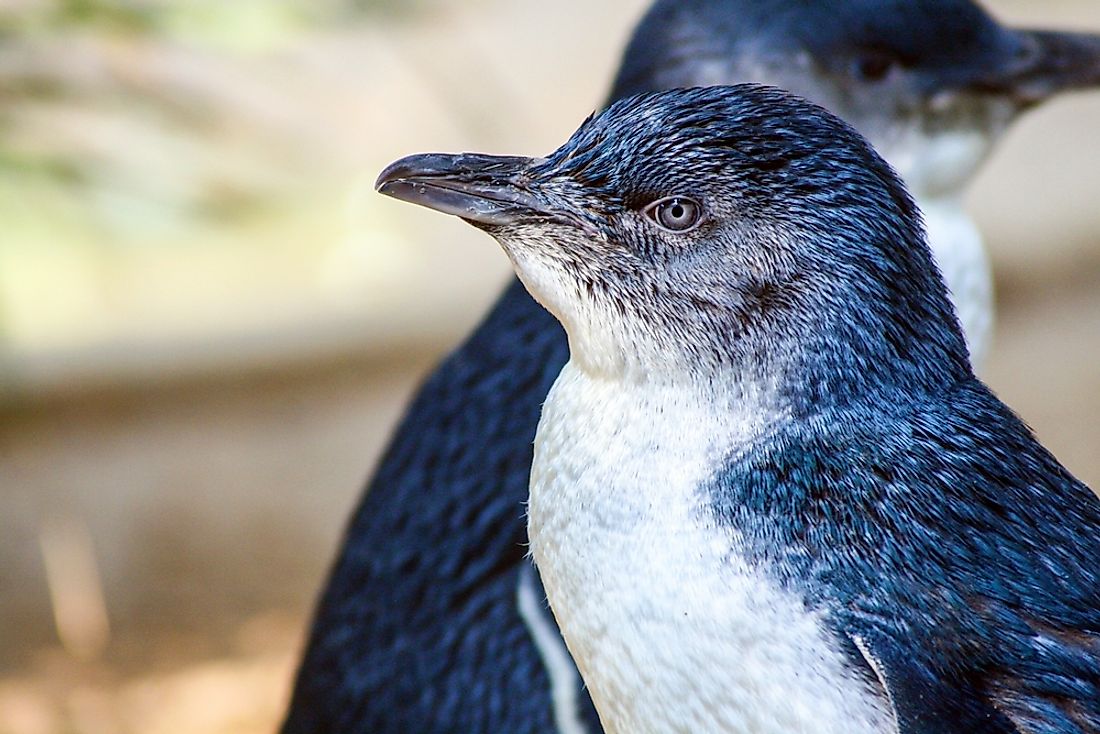
The little penguin (Eudyptula minor) is the smallest species of penguin that grows to an average of 33 cm only in height. These penguins can be observed along the coastlines of New Zealand and southern Australia. Due to their blue plumage and small size, they are fondly named as the fairy penguins. The penguins feed on small clupeoid fish, crustaceans, and cephalopods. Although classified as a least concern species, the little penguins are subjected to human disturbances in their habitat. Some of these penguins drown due to the effects of bycatch fishing. Oil spills and plastic pollution are also lethal to the penguins
5. Gentoo Penguin
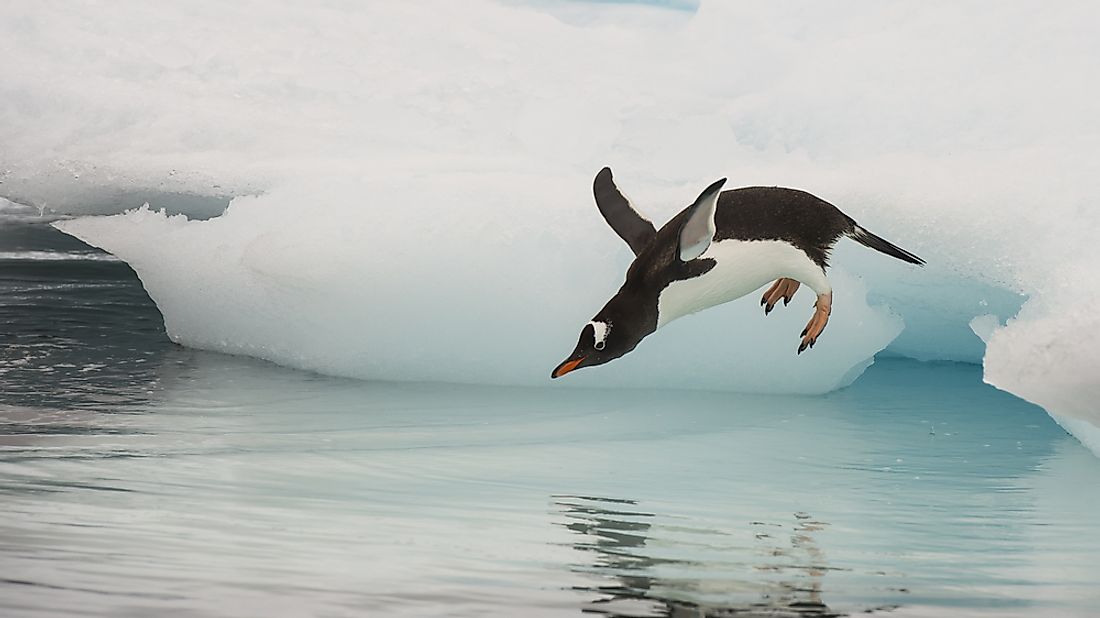
The gentoo penguin (Pygoscelis papua) is a penguin species closely associated with the Adélie penguin. The most characteristic phenotype of these penguins is the wide white stripe stretching like a bonnet the top of the head. They also possess a bright orange-colored bill and a fairly long tail. The gentoos attain a height of 51 to 90 cm which makes them the third largest penguin species. Gentoo penguins breed in many sub-Antarctic islands with the major colonies based in South Georgia, Kerguelen Islands, and the Falkland Islands. These birds feed on krill and other crustaceans as well as fish. Sea lions, killer whales, and leopard seals often prey on the gentoos while many seabirds steal their eggs. Due to the relatively stable and large population, the IUCN Red List enlists the gentoo penguins as a Least Concern species.
4. Chinstrap Penguin

The chinstrap penguin (Pygoscelis antarcticus) lives on the islands and shores of the Antarctic Ocean and the southern Pacific Ocean. The penguin gets its name from the narrow black band under its head which makes it appear as if it is wearing a helmet. These penguins have an average length of 72 cm and weigh around 3 to 5 kg. The species has a circumpolar distribution. Krill, squid, fish, and shrimp constitute the food of these penguins
3. Adélie Penguin
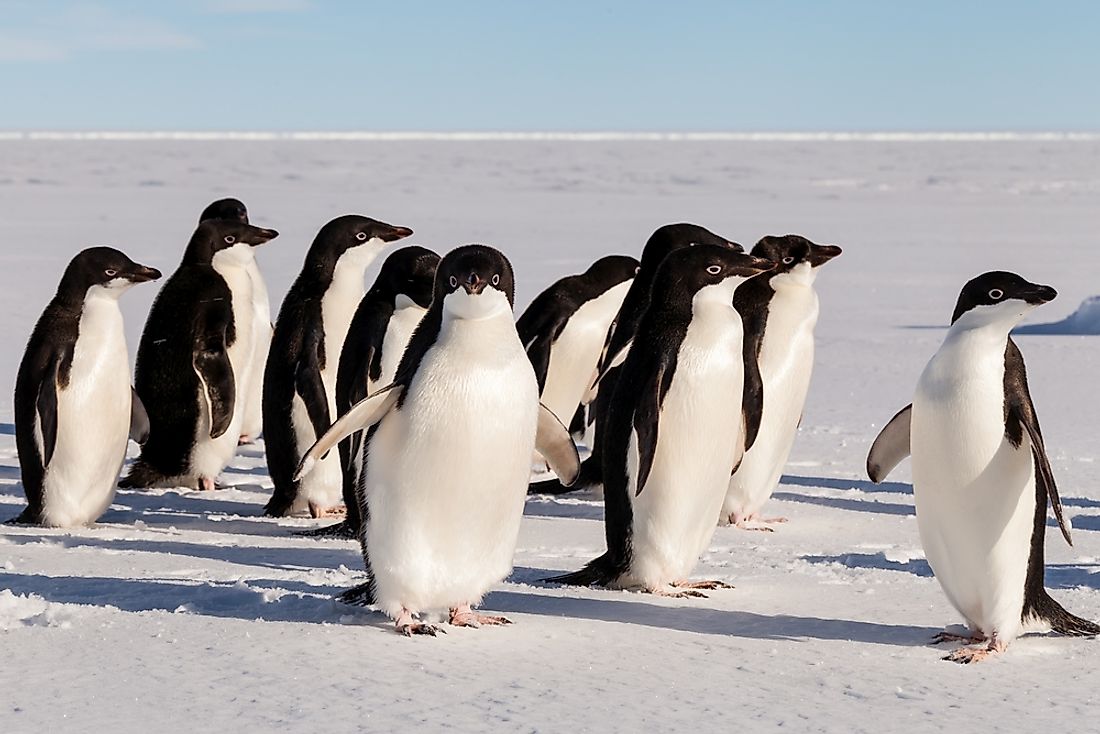
The Adélie penguin (Pygoscelis adeliae) is a penguin species living along the coast of Antarctica and is one of the most southerly distributed of all seabirds. These penguins are mid-sized with size ranging from 46 to 71 cm. The Adélie penguins are distinguished by the white ring surrounding their eye and feathers at the base of the bill. The Adélie penguins feed mainly on a variety of krill and also glacial squid. Although the population of these penguins is still quite stable, climate change threatens the future survival of this species.
2. King Penguin
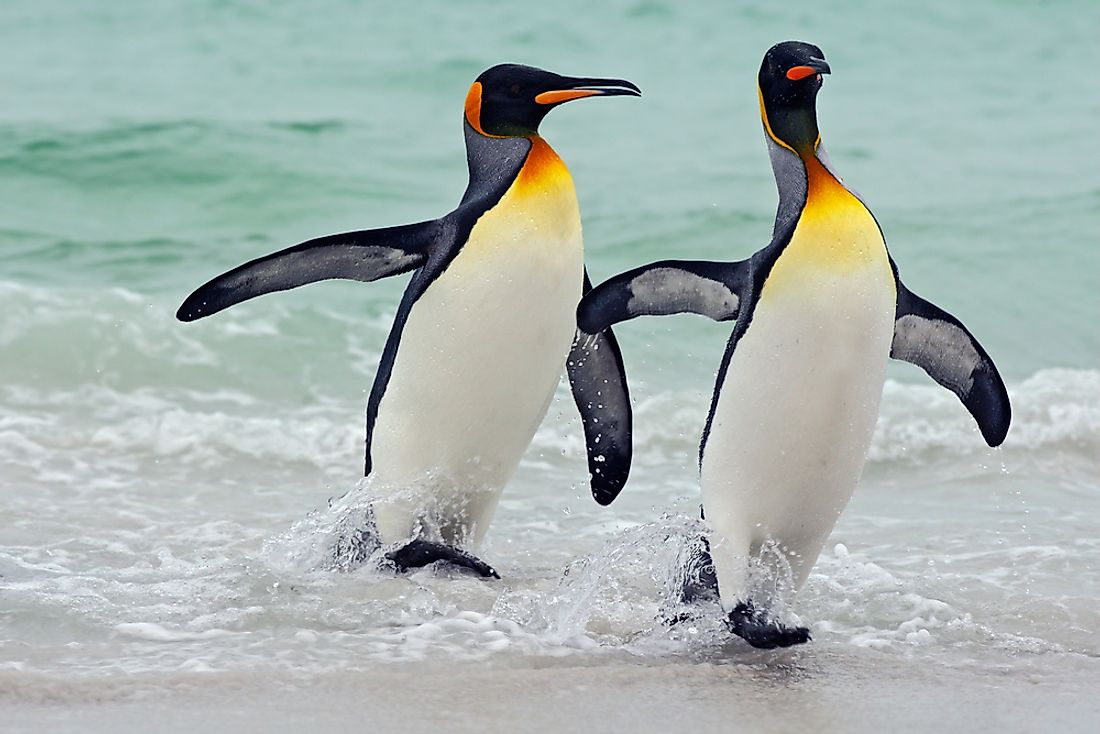
The King penguin (Aptenodytes patagonicus) is the second largest penguin after the emperor penguin. Two subspecies of the king penguin have been recognized, the A. p. patagonicus and A. p. halli. The former is found in the South Atlantic and the latter in other parts of the penguin’s range. King penguins feed on small fish, squid, and lanternfish. The penguins breed on the subantarctic islands scattered at Antarctica’s northern reaches.
1. Emperor Penguin
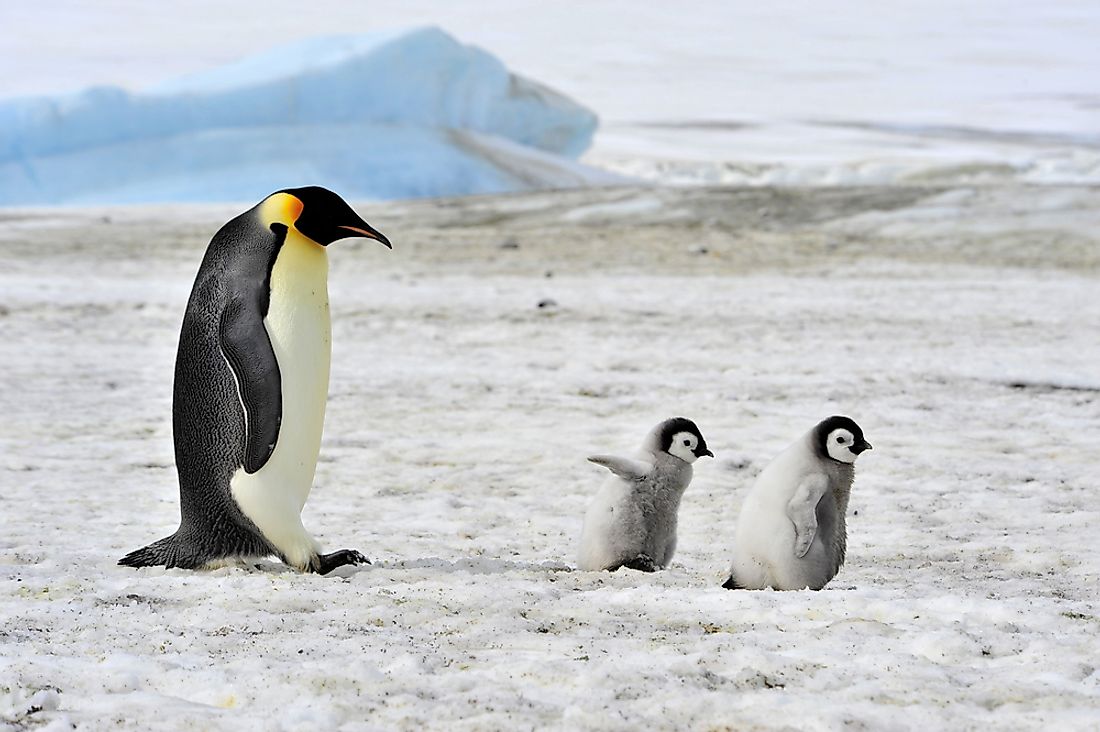
The emperor penguin (Aptenodytes forsteri) an endemic species to Antarctica. It is the tallest and heaviest among all types of penguins. The penguins attain a height of about 122 cm and weight between 22 and 45 kg. The head and dorsal surface of this species is black in color while the belly is white and breast is pale-yellow in color. The ear-patches are bright yellow in color. Fish is the primary food for these large penguins which also feed on crustaceans and cephalopods. The emperor penguins can remain under water for as long as 18 minutes.











